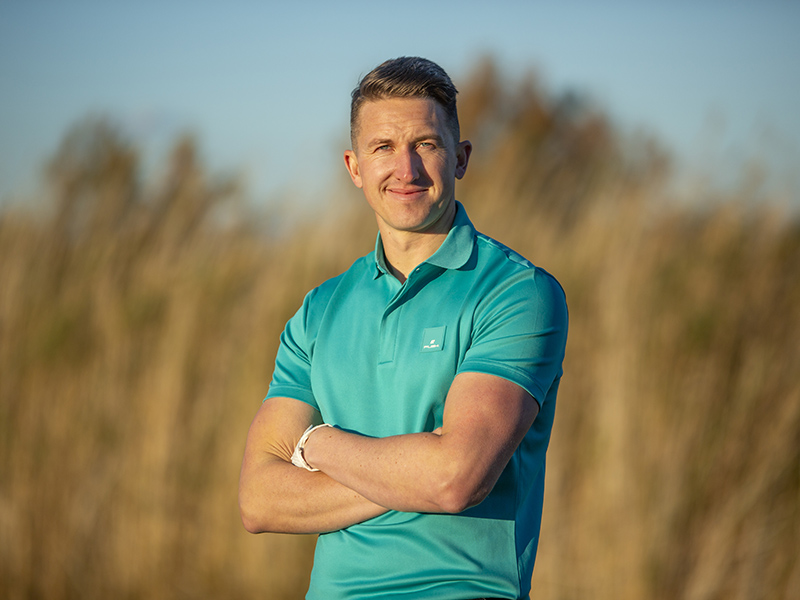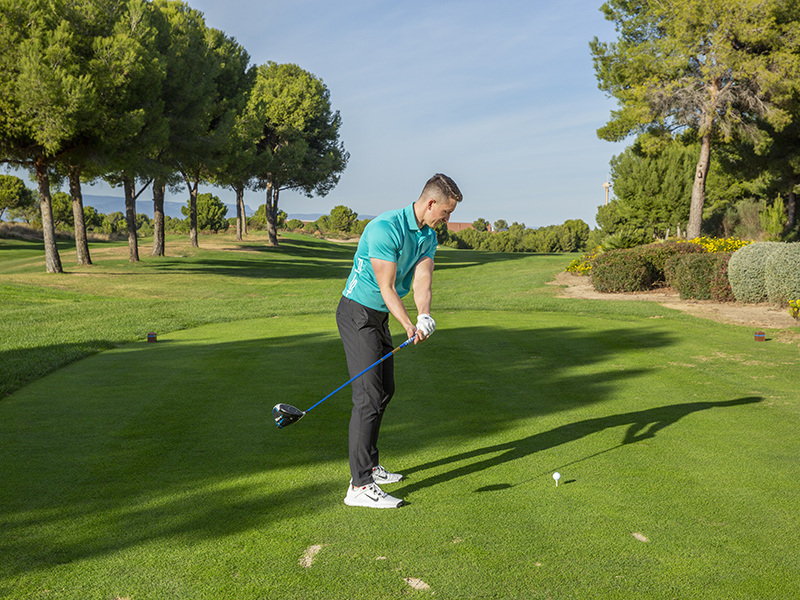3 Often Overlooked Faults That Are Crippling Your Golf Swing (And How To Fix Them)
These three golf swing plane faults affect so many amateur golfers, often leading to frustration and big scores. Fortunately, our expert coach is here to help


Getting your golf swing on plane is one of the most effective ways to improve your game and reduce your handicap, but as an amateur golfer it can be hard to know how.
This crucial aspect of the golf swing is the key to better ball striking, but in order to build consistency and reliability you first need to conquer three common faults.
In this article, Golf Monthly Top 50 Coach Gary Munro walks us through each of the three typical amateur errors, offering his expert tips and drills to get your golf swing trending in the right direction...

As Director of Golf at Pitch London, Gary Munro is leading the way in diversifying the game of golf. While he aims to make the game more accessible for a wider audience away from the golf course, he also has an impressive traditional coaching resume. In the past, Gary has overseen a number of league wins as County Manager for Bedfordshire Under 18s, and continues to help golfers of all abilities to improve their game.
Golf Swing Plane: 3 Common Faults
When you get the club across the line at the top, it points right of your feet, which should be aimed at the target. Your wrists will be set wrong, the clubface will probably be open and the club is going to come down in a steep, over-the-top manner, leading you to start slicing the golf ball.
A poor takeaway is the first common fault. When you get the club under plane very early (demonstrated in the image below) as soon as you lift and turn, the club will point across the line. You want the gap between your forearms to stay constant.

Gary Munro demonstrating the club rolling on the inside during the takeaway phase of the golf swing
The second fault lies in how the right arm and right elbow move. If you get your right arm flying and lifting up from the body, that will also send the club pointing across the line.
As you take the club to the top, you want to keep your right arm more connected to your body. The motion should be more up and down, rather than one in which your elbow pops out.
Subscribe to the Golf Monthly newsletter to stay up to date with all the latest tour news, equipment news, reviews, head-to-heads and buyer’s guides from our team of experienced experts.
A great drill is to put your left hand behind your right tricep (image below), turn up and try to resist the arm going behind. This will allow the club to sit more in front of you as you swing.

Gary Munro demonstrating a drill to make your right arm more connected in the golf swing
The third fault, and arguably the most important, is how your wrist positions look at the top. If you’re a player who cups the left wrist, this will encourage the club to be pointed across the line. A drill for this, without a club, is to clap the hands together, swing to the top and try to get your left hand to sit flatter, as here, so your right wrist now has a little bit of a bend in it.

Gary Munro demonstrating a drill to master the correct wrist position at the top of the backswing in golf
When the club is across the line, you’ll notice it is the gloved hand that has the bend in it – it is this ‘cupped’ position that is causing the club to open up. If you can combine these three fixes, you’re going to have your best chance of controlling the clubface and how the club travels into the ball.
What Is The Swing Plane In Golf?
GM says: The swing plane in golf is the angle and direction that your club moves through the backswing to the top, and then in the downswing and through impact. This is determined by your spine angle and the way you swing the club, but can also be impacted by your physical capabilities.
Is The Golf Swing Plane Different For Each Club?
GM says: The golf swing plane slightly changes depending on your club selection, as it becomes shallower or steeper depending on the length of the club.
For example, the driver is the longest club so will naturally sit (and swing) on a flatter plane. A wedge or an iron will be shorter than the driver, so the clubhead is closer to your feet at address and therefore the swing plane will be steeper.

Location: Pitch Golf London & Bedfordshire Golf Club
Gary is Director Of Golf at Pitch London. He is involved in the launch of the next Pitch site in Soho, which will open up the game to all levels. He is a big believer in equality and showcasing how fun golf can be for everyone. Gary has also coached at county level, and as County Manager has overseen a number of league wins for the U18s (Bedfordshire).
Teaching philosophy:
I don’t have a set model of swing that I coach and force on people - but impact and ball flight are everything, so I work it back from this. What impact characteristics does this player need to hit the shots and shoot the best score?
Advice for practice:
Split your practice into three sections: technical practice, skill practice (working on hitting different shots, for example, high, medium, low shots and shaping the ball) and finally pressure practice.
Students learn best when…
They self-discover. I don’t believe in coaches jumping on a player shot by shot giving more and more conflicting information, which can become confusing. I like my players to learn about their tendencies. I ask questions, allowing them to learn when they move well and why it’s good. I do the same for bad shots and ask them what they think caused that. Let them self-evaluate an answer so they develop the skill.